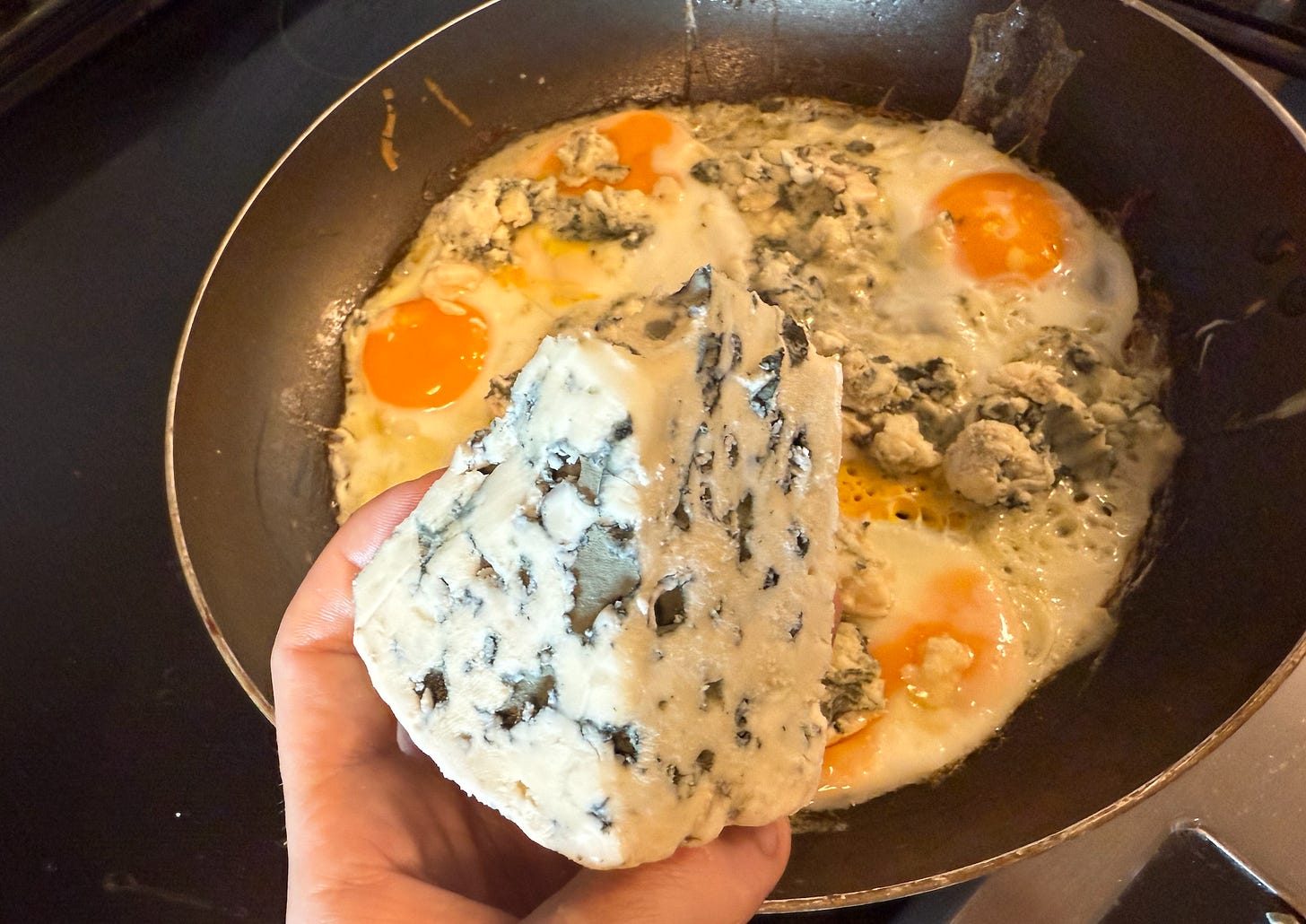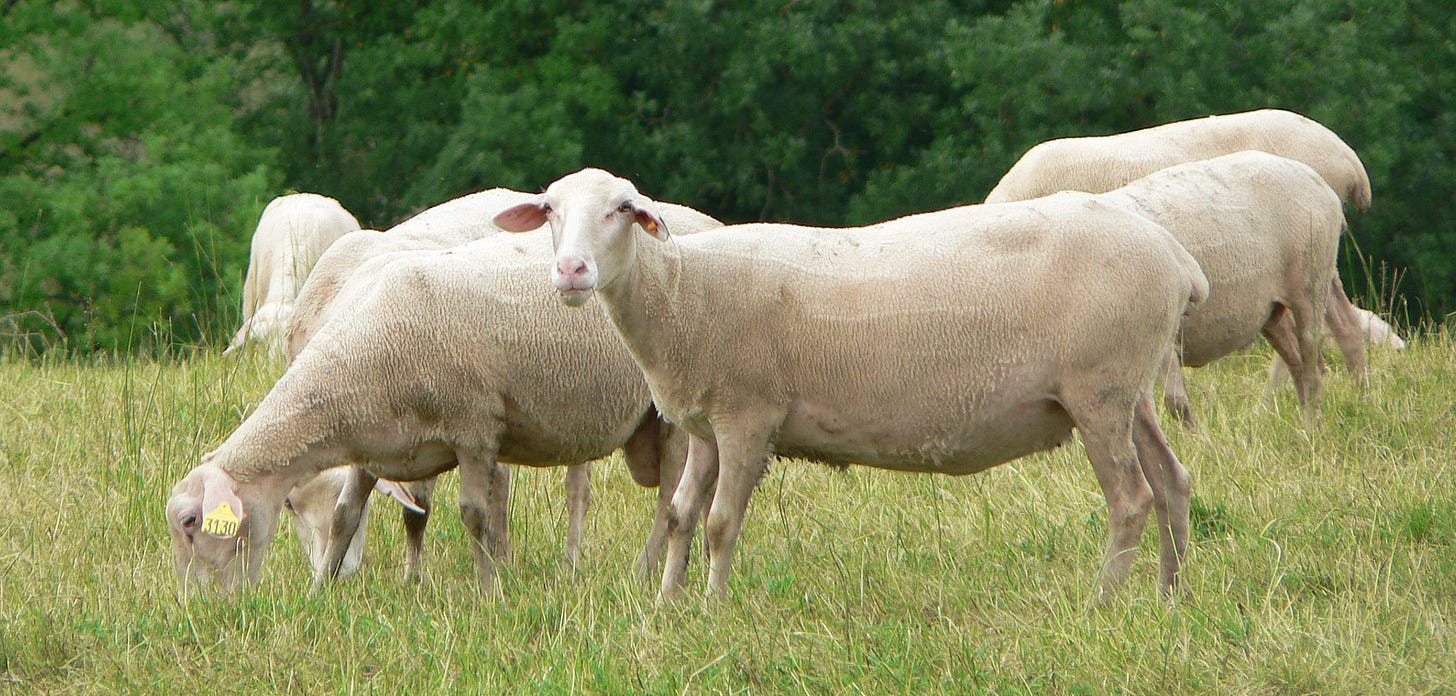Roquefort: A Cheese That’s a Mold Breaker
A cheese steeped in history, legend, and surprising health benefits. This video is my nerdy love letter to Roquefort because – yes – it is my favorite cheese.
Roquefort – a tangy, creamy blue cheese from Southern France – isn’t just the "King of Cheese" because of its incredible taste. It’s also steeped in history, legend, and surprising health benefits. This is my nerdy love letter to Roquefort because – yes – it is my favorite cheese.
Get ready to learn some fascinating cheese facts that will either boost your health literacy or, at the very least, give you some fun tidbits to churn up amusement at your next dinner party – or at least puns so stinky they’ll have everyone explaining, “How Dare He!” — But, truly, Roquefort is a mold breaker!
Game (optional): Tell me in the comments how many pun you counted, and purpose butter ones that I may have missed.
The Legendary Origin of Roquefort
Anyway, a quick history about the legend of the "King of Cheese," also known as "The Lover’s Cheese" – According to lore, Roquefort was discovered when a young man, eating his lunch of rye bread and sheep’s milk cheese, became distracted by a beautiful woman. He abandoned his meal in a nearby cave and ran after her. Months later—his life now forever changed—he returned and discovered that Penicillium roqueforti had transformed his simple cheese into something extraordinary. One bite, and he was struck by love again.
Quite a story, right? But Roquefort isn’t just a legend—it’s a cheese with a resume. Before we dive into its surprising health benefits, let’s churn through some quick facts about what makes it so special.
Fast Facts: More protection laws than my WiFi password
Roquefort is made entirely from the milk of Lacaune sheep, a hardy, hornless breed with floppy ears and the deepest udders of any milking sheep in the world. (Yes, I got udderly lost down the rabbit hole on this one.)
It takes 4.5 liters of this sheep’s milk (and at least three months of aging) to make 1 kg of Roquefort—or, as my local grocer calls it, one Nick serving size.
Legally, as dictated by the INAO, which regulates certain, French agricultural products, Roquefort must meet very strict standards:
The sheep themselves must be kept on pasture
The milk must be whole, raw (not heated above 34 °C [93 °F]), unpasteurized and unfiltered
The Penicillium roqueforti must come from the caves of Roquefort-sur-Soulzon
Geez. Roquefort’s got more protection laws than my WiFi password!
Health Benefits: Who Knew Moldy Cheese Could Be Whey Ahead?
Roquefort contains anti-inflammatory proteins, and extracts from Roquefort have been shown to inhibit the growth of certain pathogenic bacteria, like Chlamydia pneumoniae. In rodent studies, even a tiny 10 mg dose of Roquefort reduced signs of immune activation and inflammation.
One paper concluded:
“The ability of this protein to inhibit the propagation of Chlamydia infection, as well as the anti-inflammatory and pro-regenerative effects of Roquefort itself, may contribute to the low prevalence of cardiovascular mortality in France, where consumption of fungal-fermented cheeses is the highest in the world.”
Life expectancy in France is ~82 years vs. ~77 years in the United States.
And speaking of longevity, in worm models exposed to oxidative stress, Roquefort extract increased survival more than fivefold! Can we conclusively say Roquefort will extend your life? Maybe not. But will it make each year of life more delicious? Absolutely.
Who knew moldy cheese could be whey ahead in health benefits?
And for what it’s worth, the finding that fractions of Roquefort can reduce oxidative stress has also been demonstrated in human cells. Roquefort components appear to double the expression of conserved antioxidant genes like catalase and superoxide dismutase.
At a high level, all this reinforces the idea that the King of Cheeses in anti-inflammatory in nature – a fact backed by modern science and encoded in historic wisdom: In fact, it was historically common for Shepards to apply Roquefort to wounds to prevent gangrene, a severe form of tissue death that can follow infection and lead to loss of limbs.
And, lest you think I forgot about the macro and micronutrient profile, Roquefort also boasts a lovely ~1:1.5 ratio of protein to fat and a 0.88 omega-6/3 ratio, although I still personally recommend getting your omega-3s from fish. And ~3% of its fat as butyrate, the short chain fatty acid which many people think only comes from fermentation of fiber. But guess what… you can get it in certain dairy too. Butyrate derives from the Greek word (βούτῡρον) for butter.
How to Eat Roquefort: A Gouda Decision (Wait, Wrong Cheese!)
Well, my #1 favorite way is on eggs—it melts beautifully and gives scrambled or fried eggs an incredible creamy tang. It’s beyond eggcellent.
It’s also fantastic with nuts, bacon, or—if you’re not sugar-free—fruits and honeycomb. And if you’re really looking to splurge, a ribeye with Roquefort might just be in my top three dinners of all time.
Oh, and if you’re feeling adventurous, I’ve even made Roquefort cheesecake before. Once. Because, frankly, it was expensive!
Conclusion: If You Don’t Like Roquefort, I Have Grate Concerns
Roquefort isn’t just a cheese—it’s an experience, a legend, and possibly even a health food. Whether you enjoy it for its complex flavors, rich history, or surprising health benefits, one thing is certain: the King of Cheeses reigns supreme.
So, whether you savor it on a steak, melt it on eggs, or just eat it straight from the wedge—long live the King of Cheeses! Oh, and if you still don’t like Roquefort… well, I have grate concerns about your life choices.
Food Combination & Recipe Ideas
Roquefort & Bacon
Roquefort & Nuts (Walnuts, Pecans)
Roquefort on Eggs
Roquefort (Crumbled, or as Blue Cheese Butter) on Ribeye
Roquefort Cheesecake — The one time I did this, I blending walnuts and butter for the crust, and pressed it into a cheesecake pan. I then used standard cheesecake filling ratios based on a standard cheesecake recipe, substituting in half of the cream cheese for roquefort: 1lb cream cheese, 1 lbs roquefort, 1/2 cup A2 sour cream, 4 large egg yolks, 2 tsp vanilla, and optional allulose, monkfruit, or stevia sweetener to taste. I baked it for ~40 min at 325F until the top was golden brown. Then I finished it with a crumbling of more Roquefort and a drizzle of a Greek Extra Virgin Olive Oil). It’s definitely an acquired taste. And certainly ‘odd.’ But I enjoyed it. I bet you could also make high protein variations with Whey or cottage cheese, and I’m sure it would taste fantastic with a honey drizzle, depending on your dietary preferences.
Roquefort and Apricots
Roquefort and Blackberries
Roquefort and Tangerine
Roquefort and Honeycomb









I'm thinking there are stiltons of puns to be had, but can't seem to wheel many of them out.
That cheesecake sounds ridiculous... Ridiculously GOOD, that is. 🤤
I suspect I'll try it sometime, although likely a little lighter on the Roquefort and heavier on the cream cheese. Thanks for the recipe!